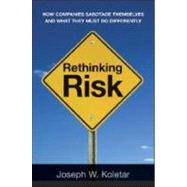
What is included with this book?
JOSEPH W. KOLETAR (Bolivia, NC) served as Executive Director, Principal, and Director in the Fraud and Investigations practices of Ernst & Young LLP and Deloitte & Touché LLP. In addition to his international work with many premier law firms, his forty-year FBI career culminated in his role as Section Chief in the Criminal Investigative Division.
| Author's Note | p. ix |
| Acknowledgments | p. xvii |
| Introduction | p. xxi |
| Observations About Risk | p. 1 |
| Fraud as an Example of Risk | p. 19 |
| Frontline Interviews with Risk Management Experts | p. 35 |
| How We Attempt to Deal with Risk | p. 73 |
| Why Things Go Wrong | p. 95 |
| How Risk Is Discovered | p. 147 |
| Organizational Intelligence-Practical Reality | p. 157 |
| Organizational Intelligence-Thought and Theory | p. 183 |
| Using Consultants | p. 199 |
| Concluding Thoughts | p. 209 |
| Glossary | p. 223 |
| Index | p. 231 |
| Table of Contents provided by Ingram. All Rights Reserved. |
The New copy of this book will include any supplemental materials advertised. Please check the title of the book to determine if it should include any access cards, study guides, lab manuals, CDs, etc.
The Used, Rental and eBook copies of this book are not guaranteed to include any supplemental materials. Typically, only the book itself is included. This is true even if the title states it includes any access cards, study guides, lab manuals, CDs, etc.